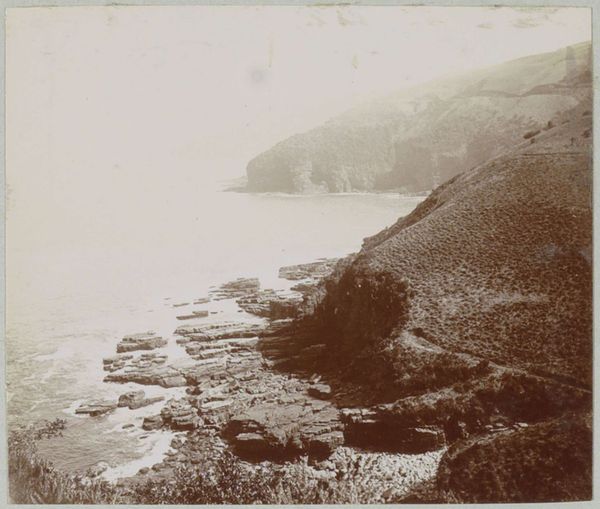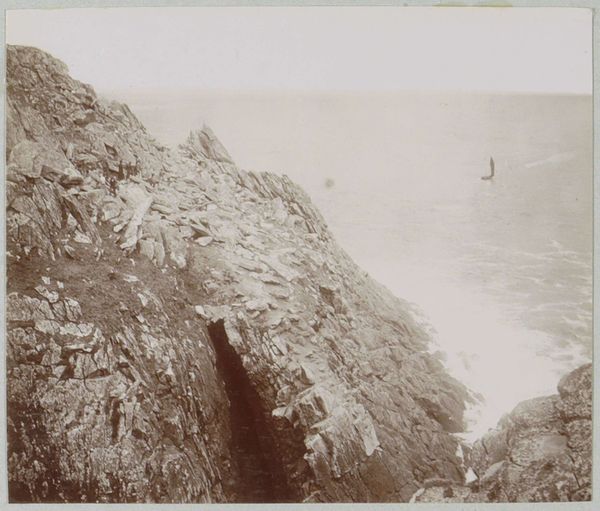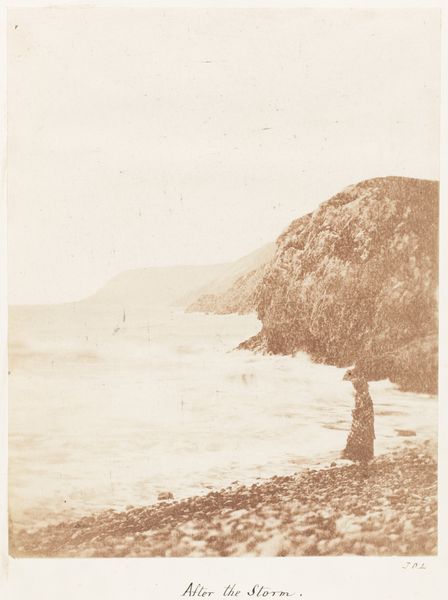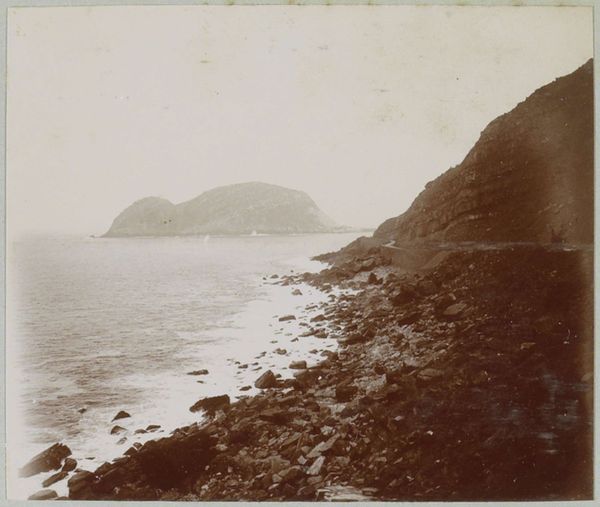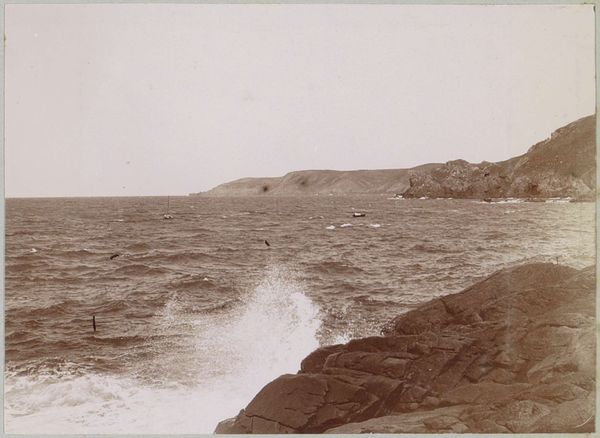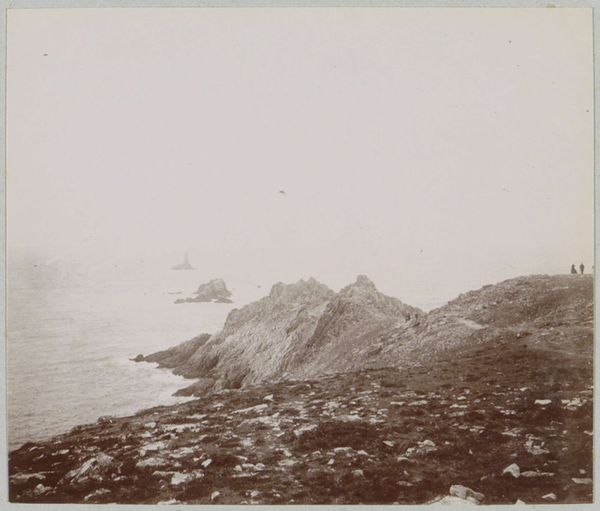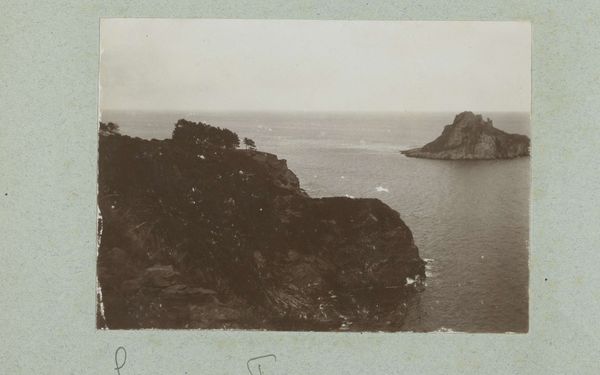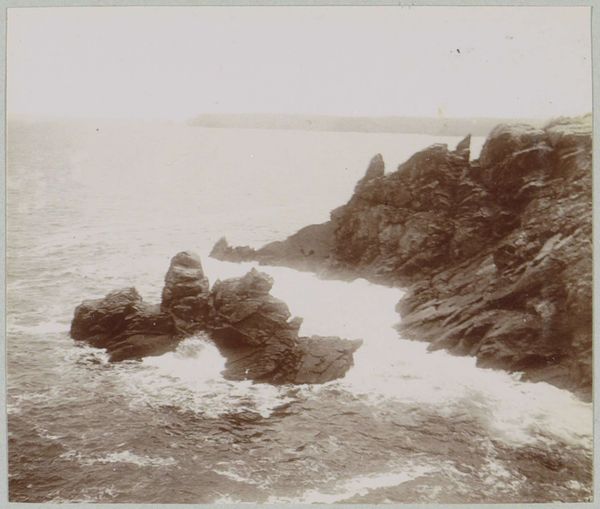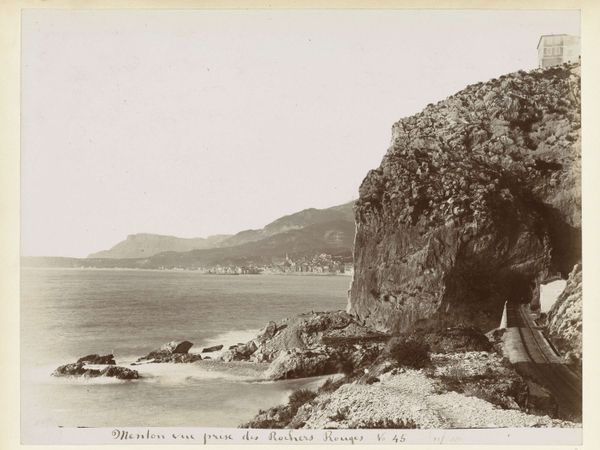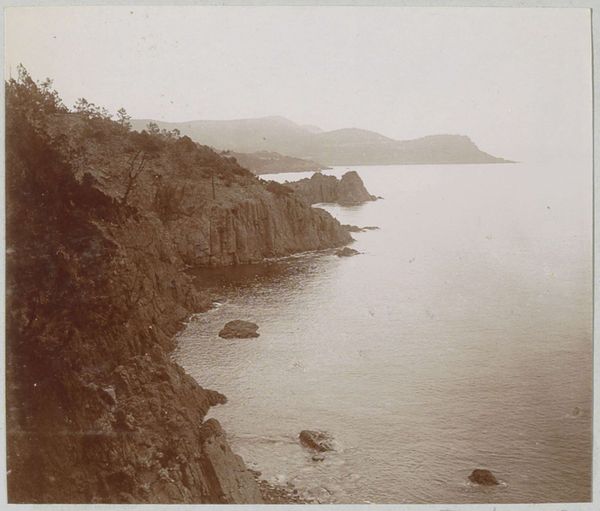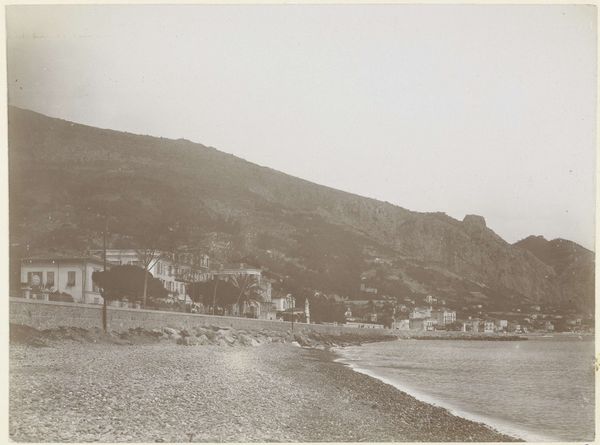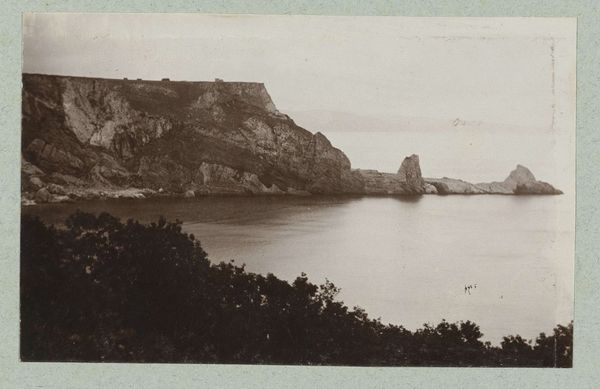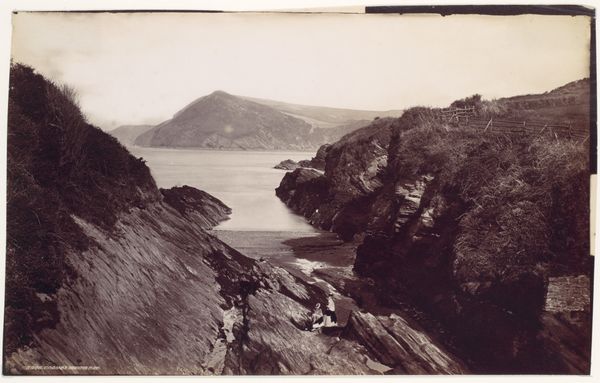
Dimensions: Image: 12 × 10.8 cm (4 3/4 × 4 1/4 in.)
Copyright: Public Domain
Editor: Here we have John Dillwyn Llewelyn's "Winds & Waves," created between 1853 and 1856. The monochromatic tones and somewhat blurred textures evoke a pensive mood. How would you interpret this work? Curator: I see a fascinating interplay between the represented subject and the means of its production. The choice of photography in this historical moment—mid-19th century—elevates a scene of nature to the realm of art through technology. Think about the labour involved: the meticulous preparation of the photographic plates, the exposure time dictated by available light and materials. Do you think that adds to the appreciation of the image? Editor: I hadn’t considered the production process so deeply, but absolutely! The human element, despite the mechanical nature of photography, is undeniable. Curator: Precisely. Furthermore, the image hints at social considerations. Who are the figures presented? What roles did they play in Llewelyn's life, and what does their inclusion suggest about Victorian society's relationship to landscape and leisure? This wasn't simply about documenting a scene; it was about situating figures within a particular class and cultural framework. Editor: It's like a constructed reality rather than just a snapshot. Curator: Exactly! The print becomes an artifact of social and material practices rather than solely a window onto a beautiful vista. It blurs the boundaries of art and document, calling attention to its constructed nature. Editor: Thinking about the materials and labor gives a whole new dimension to viewing older photographs. Curator: It certainly helps to situate it within the complex network of production, consumption, and representation that shapes all artistic endeavors. I’ve definitely enjoyed talking through this piece today. Editor: Me too! It was fascinating to look at it from this perspective.
Comments
No comments
Be the first to comment and join the conversation on the ultimate creative platform.
